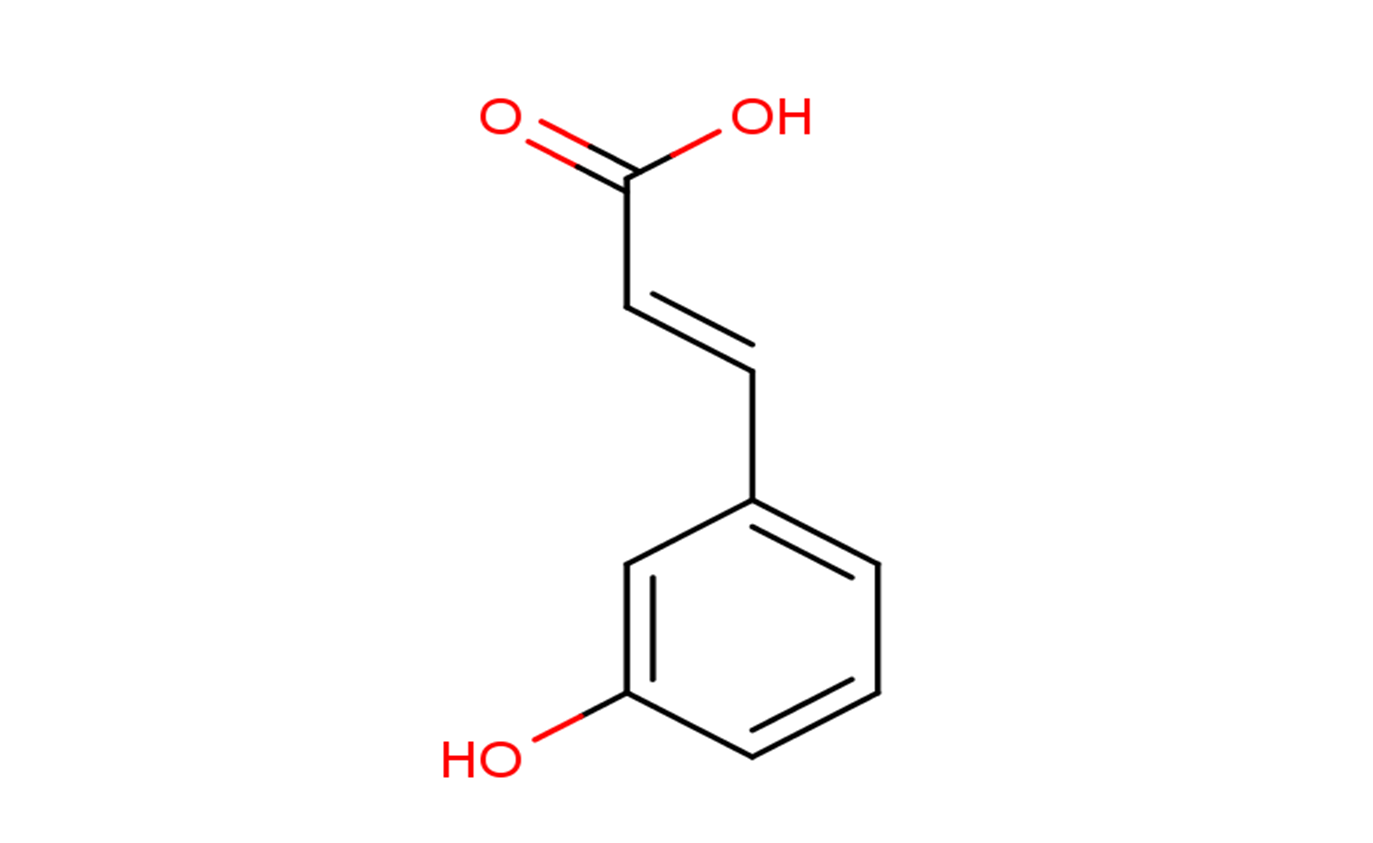
m-Coumaric acid
CAS No. 588-30-7
m-Coumaric acid( —— )
Catalog No. M24580 CAS No. 588-30-7
m-Coumaric acid is a polyphenol metabolite from caffeic acid, formed by the gut microflora and the amount in human biofluids is diet-dependant.?
Purity : >98% (HPLC)
 COA
COA
 Datasheet
Datasheet
 HNMR
HNMR
 HPLC
HPLC
 MSDS
MSDS
 Handing Instructions
Handing Instructions
| Size | Price / USD | Stock | Quantity |
| 500MG | 45 | In Stock |


|
| 1G | Get Quote | In Stock |


|
Biological Information
-
Product Namem-Coumaric acid
-
NoteResearch use only, not for human use.
-
Brief Descriptionm-Coumaric acid is a polyphenol metabolite from caffeic acid, formed by the gut microflora and the amount in human biofluids is diet-dependant.?
-
Descriptionm-Coumaric acid is a polyphenol metabolite from caffeic acid, formed by the gut microflora and the amount in human biofluids is diet-dependant.?
-
In Vitro——
-
In Vivo——
-
Synonyms——
-
PathwayProteasome/Ubiquitin
-
TargetEndogenous Metabolite
-
RecptorHuman Endogenous Metabolite
-
Research Area——
-
Indication——
Chemical Information
-
CAS Number588-30-7
-
Formula Weight164.16
-
Molecular FormulaC9H8O3
-
Purity>98% (HPLC)
-
SolubilityDMSO:10 mM
-
SMILESO=C(O)/C=C/C1=CC=CC(O)=C1
-
Chemical Name——
Shipping & Storage Information
-
Storage(-20℃)
-
ShippingWith Ice Pack
-
Stability≥ 2 years
Reference
1.Ito H, et al. Chlorogenic acid and its metabolite m-coumaric acid evoke neurite outgrowth in hippocampal neuronal cells. Biosci Biotechnol Biochem. 2008 Mar;72(3):885-8.
molnova catalog



related products
-
Guanosine 5'-diphosp...
Guanosine 5'-diphosphate as Potential Iron Mobilizer Preventing the Hepcidin-Ferroportin Interaction and Modulating the Interleukin-6/Stat-3 Pathway.
-
Pyridoxylamine
Pyridoxylamine is an inhibitor of advanced glycation end production (AGEs) and lipoxidation end products (ALEs).
-
(S)-b-aminoisobutyri...
(S)-b-aminoisobutyric acid is a non-protein amino acid originating from the catabolism of thymine and valine.



 Cart
Cart
 sales@molnova.com
sales@molnova.com


